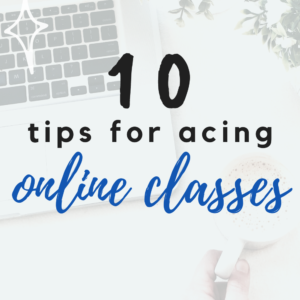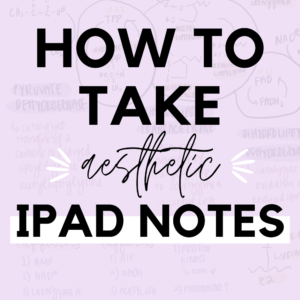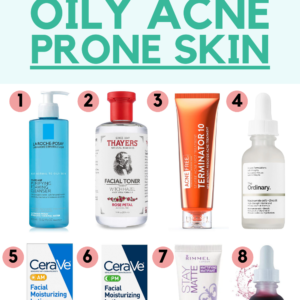Hello everyone! It’s been so long since I made a blog post, but I’m back with a guide on how to get an undergraduate research position! When I entered college as a premed student and bio major, everyone around me would talk about getting research experience. Not only is it preferred by some medical schools, but it is also a great way to build your resume as an undergraduate since you’re applying what you’ve learned in class. As a second year, I knew that I wanted to get a research position, but I didn’t quite know how.
After asking fellow students, looking up tips, and trial and error, I’ve put together 4 easy steps to finding research opportunities and getting hired. These steps are based on my experiences at UC San Diego, so it definitely is not the only way to get a position. Regardless of what school you go to, I think that you’ll find the guide helpful!
1. Start looking for an opening at the right places
You might think that they are impossible to find, but I assure you that there are so many opportunities at your university. The simplest way to learn about open positions is through word of mouth. Ask your working friends, TAs, or even professors if they have openings in their labs.
Also look for university-affiliated websites that advertise internships on campus or nearby. For example, UCSD and a lot of other schools are connected to a website called Handshake. Handshake lets you explore paid and volunteer positions related to your major on/off campus. If you find a position that you like, you can apply ON THE SPOT by submitting your resume and cover letter and answering a few questions. Some employers may just ask for a resume, while others will require all three to be submitted.



Let’s say that Handshake doesn’t work out- do not give up! You can always look online for a list of the labs at your university and its associated medical school and hospitals. Think about all of the professors along with the doctors and scientists who do research at your school! YEAH, there a lot, which can only mean more opportunities for you. While you’re reading through lab websites, it’s important to find a lab whose research and mission interests you.

Once you’ve found labs that you like through word of mouth, Handshake, or researching online, it’s time for step two…
(If you are a UCSD student: also check out REAL Portal to find on/off campus opportunities. Unlike Handshake, you cannot apply directly on REAL Portal. Instead, you have to apply through the email provided.)
2. Email, email, email!
Alright, this very important step is going to be split up into two parts depending on:
- if you submitted an application through an external website such as Handshake
- if you found labs that you want to work at through your own research
PART 1: HANDSHAKE
Applying through Handshake is easy, so you can imagine that many other students are going to be doing the same. You need to ask yourself how employers are going to pick your application over the hundreds of others submitted. How are you going to stand out? Here’s a tip: email the lab’s PI (primary investigator) right after you submit your application. If you’re up for it, you can email the PI asking to schedule an in-person or phone call meeting with them to talk about their lab’s research or upcoming projects (see image below). This action tells the PI that you are highly motivated and very interested about their research. Even if they are unavailable for a meeting, you still have an advantage over all of the other applicants!

PART 2: COLD EMAILING
Once you’ve compiled a list of labs you want to work at, you’re going to want to send them an email asking if they have opportunities for you to get involved. There are several important components that you’ll need to add to the email:
- A brief introduction about yourself
- Your interest in their research
- (read one of their publications and mention it in the email. this shows that you are actually really interested)
- Ask if there are opportunities to get involved with their work
- State your availability
- it makes it easier on them to find a time that works for the both of you
- Optional: you can attach your resume to the email for their reference
Here is a template that you can use. Feel free to add or take out content as needed:

NOTE: Most labs that you directly email asking for opportunities will not pay you, so you will essentially be volunteering your time. Handshake is nice because employers state whether they will pay you or not.
3. Nail your interview
After a few days you should receive an email from the PI regarding if they want to interview you. Hopefully you receive an email similar to the one below! If not, I promise you that it’s going to be okay! Don’t give up on applying to labs because there’s going to be one that just right for you. You just have to have patience. 🙂

Going through an interview is the most nerve wracking thing. It’s something that you can never fully prepare for because you do not know what to expect. Some of my friends have told me that their “interview” process consisted of only 2 questions directed towards them and the rest of the time was spent on talking about the lab and the PI’s work. On the flip side, my interview for the lab I currently work at lasted about half an hour filled with tons of questions. It was pretty intense, but I was able to prepare for it through the following steps:
- Look for common interview questions and research/internship specific questions 1-2 days before the interview
- Formulate answers for the questions. Don’t try to memorize the answers word for word, but have a general idea of what you’d say if they ask you that question.
- Dress for Success! I recommend wearing a business casual outfit.
- Arrive to the interview place 10-15 minutes early so that you can find the specific room you’ll be interviewing at. Make sure to bring a copy of your resume!
- Right before your interview starts, stay calm, think positively, and pray.
- It’s time for your interview! Greet them with a firm handshake and eye contact, hand them your resume, and stay confident.
I’m going to make a separate post on all of my interview tips (you can trust me because I’ve gone through a lot haha) as well as actual questions that interviewers will ask you. Look out for that!
3. After your interview, thank your interviewer for their time via email.
This step is a matter of politeness, and some interviewers will be looking out to see which applicants write a thank you email. It lets your interviewer know that you appreciated the interview and genuinely care for the company. Click this link for sample thank you emails!
4. R E L A X. What happens next is out of your control.
I really hope that this post helps you! Let me know in the comments below if it did or if you have any other tips to add! I wish you the best of luck with applying. You totally got this! 🙂
PIN THIS IMAGE TO SAVE THIS POST FOR LATER










